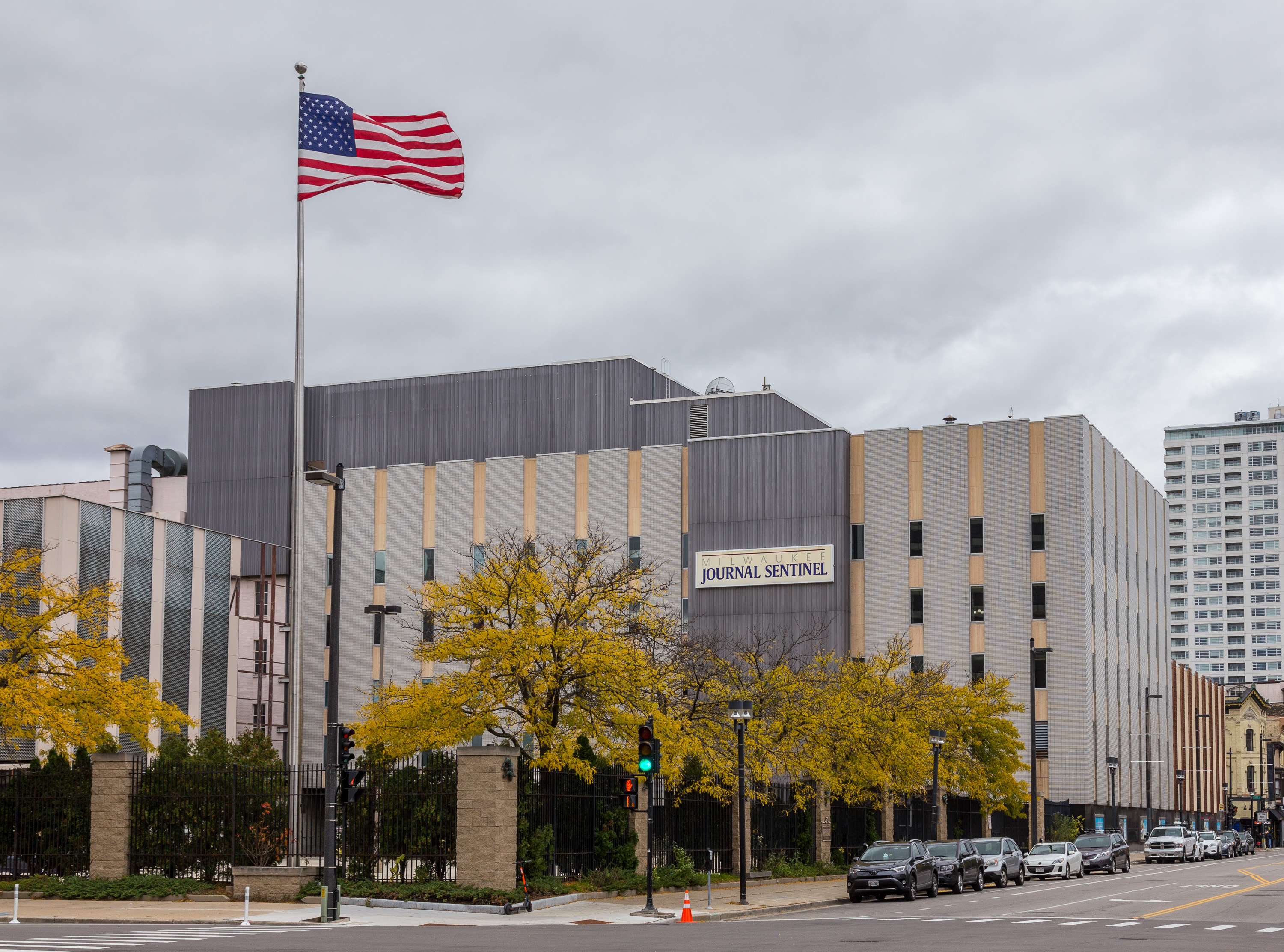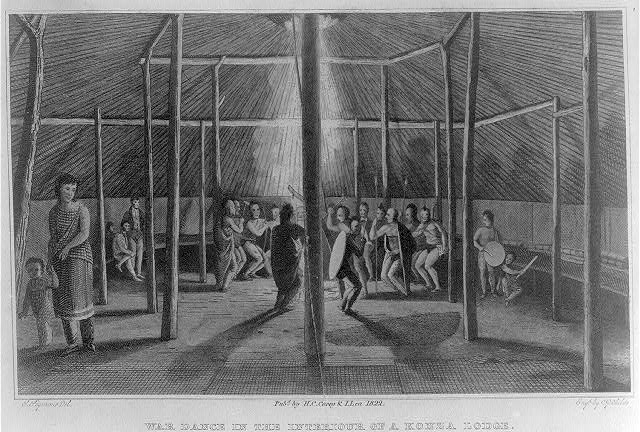|
Fredonia (town), Wisconsin
Fredonia is a town in Ozaukee County, Wisconsin, United States. The population was 2,903 at the 2000 census. The Village of Fredonia is surrounded by the town. The unincorporated communities of Little Kohler and Waubeka are also located in the town. History The land that became the Fredonia was originally inhabited by Native Americans, including the Potawatomi tribe, who surrendered the land to the United States government in 1833 through the 1833 Treaty of Chicago. While many Native people moved west of the Mississippi River to Kansas, some chose to remain, and were referred to as "strolling Potawatomi" in contemporary documents because many of them were migrants who subsisted by squatting on their ancestral lands, which were now owned by white settlers. One such group was led by Chief Waubeka, who maintained a winter camp in the Ozaukee County community that bears his name as late as 1845. Eventually the Potawatomi who evaded forced removal gathered in northern Wisconsin ... [...More Info...] [...Related Items...] OR: [Wikipedia] [Google] [Baidu] |
Administrative Divisions Of Wisconsin
The administrative divisions of Wisconsin include counties, cities, villages and towns. In Wisconsin, all of these are units of general-purpose local government. There are also a number of special-purpose districts formed to handle regional concerns, such as school districts. Whether a municipality is a city, village or town is not strictly dependent on the community's population or area, but on the form of government selected by the residents and approved by the Wisconsin State Legislature. Cities and villages can overlap county boundaries; for example, the city of Whitewater is located in Walworth and Jefferson counties. County Image:Wisconsin-counties-map.gif, 380px, Wisconsin counties (clickable map) poly 217 103 253 146 263 93 216 150 218 178 232 176 243 155 280 75 266 147 266 180 241 186 210 188 208 101 242 91 253 92 239 105 230 152 229 161 228 167 265 188 284 69 221 91 232 104 252 129 255 165 259 173 Bayfield poly 290 133 300 145 299 178 290 210 309 199 298 140 311 1 ... [...More Info...] [...Related Items...] OR: [Wikipedia] [Google] [Baidu] |
Little Kohler, Wisconsin
Little Kohler, or Kohler, is an unincorporated community located in the Town of Fredonia in Ozaukee County, Wisconsin, United States. Transportation Little Kohler is located at the intersection of County Highway H (Kohler Drive, Fredonia-Kohler Road), Belgium-Kohler Road, and County Highway E. County H had been designated as Wisconsin Highway 84 before the highway was decommissioned. History Martin and Theresa Koller and their children settled in the area in the 1840s, having emigrated from Bavaria. The community was originally named Koller, after them. In 1912, the Kohler Company created a planned community in an area of Sheboygan County formerly known as River Side. They named the village Kohler after the family company. At some point, the community of Koller began to be called Kohler as well. Residents of the Kohler in Ozaukee County then began referring to their community as "Little Kohler" to differentiate the two. Little Kohler is the location of the former Camp Fredoni ... [...More Info...] [...Related Items...] OR: [Wikipedia] [Google] [Baidu] |
Belgium, Wisconsin
Belgium is a village in Ozaukee County, Wisconsin, United States. Located along Interstate 43, the village is one of the northernmost communities in the Milwaukee metropolitan area. The population was 2,245 at the 2010 census. Beginning in the 1840s, immigrant farmers from Luxembourg settled in Northern Ozaukee County and formed several rural communities, including Belgium as well as the neighboring hamlets of Dacada, Holy Cross, and Lake Church. Although Belgium grew after a railroad was constructed through the community and incorporated as a village in 1922, the community remained primarily agricultural in the 20th century. As recently as 2015, the local cannery, which processes fruits and vegetables harvested at area farms, was by far the village's largest employer. The village continues to have strong cultural ties to the Grand Duchy of Luxembourg. Members of the Grand Ducal Family of Luxembourg have visited, and the Luxembourg Government sponsors the Luxembourg Ameri ... [...More Info...] [...Related Items...] OR: [Wikipedia] [Google] [Baidu] |
Prisoner Of War
A prisoner of war (POW) is a person who is held captive by a belligerent power during or immediately after an armed conflict. The earliest recorded usage of the phrase "prisoner of war" dates back to 1610. Belligerents hold prisoners of war in custody for a range of legitimate and illegitimate reasons, such as isolating them from the enemy combatants still in the field (releasing and repatriating them in an orderly manner after hostilities), demonstrating military victory, punishing them, prosecuting them for war crimes, exploiting them for their labour, recruiting or even conscripting them as their own combatants, collecting military and political intelligence from them, or indoctrinating them in new political or religious beliefs. Ancient times For most of human history, depending on the culture of the victors, enemy fighters on the losing side in a battle who had surrendered and been taken as prisoners of war could expect to be either slaughtered or enslaved. Ea ... [...More Info...] [...Related Items...] OR: [Wikipedia] [Google] [Baidu] |
List Of POW Camps In The United States
In the United States at the end of World War II, there were prisoner-of-war camps, including 175 Branch Camps serving 511 Area Camps containing over 425,000 prisoners of war (mostly German). The camps were located all over the US, but were mostly in the South, due to the higher expense of heating the barracks in colder areas. Eventually, every state (with the exceptions of Nevada, North Dakota, and Vermont) had at least one POW camp. Some of the camps were designated "segregation camps", where Nazi "true believers" were separated from the rest of the prisoners, whom they terrorized and even killed for being friendly with their American captors. Approximately 90% of Italian POWs pledged to help the United States, by volunteering in Italian Service Units (ISU). Due to a labor shortage, Italian Service Units worked on Army depots, in arsenals and hospitals, and on farms. POWs who were a part of the ISU received better housing, uniforms and pay. [...More Info...] [...Related Items...] OR: [Wikipedia] [Google] [Baidu] |
The Milwaukee Sentinel
The ''Milwaukee Journal Sentinel'' is a daily morning broadsheet printed in Milwaukee, Wisconsin, where it is the primary newspaper. It is also the largest newspaper in the state of Wisconsin, where it is widely distributed. It is currently owned by the Gannett Company.Gannett Completes Acquisition of Journal Media Group . ''USA Today'', April 11, 2016. In early 2003, the ''Milwaukee Journal Sentinel'' began printing operations at a new printing facility in West Milwaukee. In September 2006, the ''Journal Sentinel'' announced it had "signed a five-year agreement to print the national edition of '' |
Fredonia, New York
Fredonia is a village in Chautauqua County, New York, United States. The population was 9,871 as of the 2020 census. Fredonia is in the town of Pomfret south of Lake Erie. The village is the home of the State University of New York at Fredonia (in the northwest part of the village). Fredonia is one of only twelve villages in New York still incorporated under a charter, the other villages having incorporated or re-incorporated under the provisions of Village Law. History The village that is now Fredonia was most likely first occupied by early Mound Builders, then the Erie people (13th to 17th centuries), then the Iroquois (specifically, the Seneca).Daniel D., ''Architecture in Fredonia, New York, 1811-1997'', p. 26, White Pine Press (1997) () In 1791, Robert Morris purchased the Fredonia land from Massachusetts and sold it to the Holland Land Company. Parcels were sold to pioneers around 1800, and the first settlers came around 1803 or 1804. In 1821, William Hart dug the f ... [...More Info...] [...Related Items...] OR: [Wikipedia] [Google] [Baidu] |
Forest County Potawatomi Community
The Forest County Potawatomi Community ( pot, Ksenyaniyek) is a federally recognized tribe of Potawatomi people with approximately 1,400 members as of 2010. The community is based on the Forest County Potawatomi Indian Reservation, which consists of numerous non-contiguous plots of land in southern Forest County and northern Oconto County, Wisconsin, United States. The community also administers about of off-reservation trust land in the city of Milwaukee Milwaukee ( ), officially the City of Milwaukee, is both the most populous and most densely populated city in the U.S. state of Wisconsin and the county seat of Milwaukee County, Wisconsin, Milwaukee County. With a population of 577,222 at th .... According to the U.S. Census Bureau, the reservation and off-reservation trust land together have a total area of . The combined population of Forest County Potawatomi Community and Off-Reservation Trust Land was 594 in the 2020 census. The nation's administrative and cul ... [...More Info...] [...Related Items...] OR: [Wikipedia] [Google] [Baidu] |
Squatting
Squatting is the action of occupying an abandoned or unoccupied area of land or a building, usually residential, that the squatter does not own, rent or otherwise have lawful permission to use. The United Nations estimated in 2003 that there were one billion slum residents and squatters globally. Squatting occurs worldwide and tends to occur when people who are poor and homeless find empty buildings or land to occupy for housing. It has a long history, broken down by country below. In developing countries and least developed countries, shanty towns often begin as squatted settlements. In African cities such as Lagos much of the population lives in slums. There are pavement dwellers in India and in Hong Kong as well as rooftop slums. Informal settlements in Latin America are known by names such as villa miseria (Argentina), pueblos jóvenes (Peru) and asentamientos irregulares (Guatemala, Uruguay). In Brazil, there are favelas in the major cities and land-based movement ... [...More Info...] [...Related Items...] OR: [Wikipedia] [Google] [Baidu] |
Kansas
Kansas () is a state in the Midwestern United States. Its capital is Topeka, and its largest city is Wichita. Kansas is a landlocked state bordered by Nebraska to the north; Missouri to the east; Oklahoma to the south; and Colorado to the west. Kansas is named after the Kansas River, which in turn was named after the Kansa Native Americans who lived along its banks. The tribe's name (natively ') is often said to mean "people of the (south) wind" although this was probably not the term's original meaning. For thousands of years, what is now Kansas was home to numerous and diverse Native American tribes. Tribes in the eastern part of the state generally lived in villages along the river valleys. Tribes in the western part of the state were semi-nomadic and hunted large herds of bison. The first Euro-American settlement in Kansas occurred in 1827 at Fort Leavenworth. The pace of settlement accelerated in the 1850s, in the midst of political wars over the slavery deba ... [...More Info...] [...Related Items...] OR: [Wikipedia] [Google] [Baidu] |
1833 Treaty Of Chicago
The 1833 Treaty of Chicago struck an agreement between the United States government that required the Chippewa Odawa, and Potawatomi tribes cede to the United States government their of land (including reservations) in Illinois, the Wisconsin Territory, and the Michigan Territory and to move west of the Mississippi River. In return, the tribes were given promises of various cash payments and tracts of land west of the Mississippi River. The treaty was one of the removal treaties to come after the passage of the Indian Removal Act. This was the second treaty referred to as the "Treaty of Chicago", after the 1821 Treaty of Chicago. Background The negotiation of the cession treaty came roughly three years after the United States federal government ratified the Indian Removal Act. While many cession treaties had previously been negotiated between the United States government and Native American tribes during the late 18th century and early 19th century, those that were negotiate ... [...More Info...] [...Related Items...] OR: [Wikipedia] [Google] [Baidu] |





